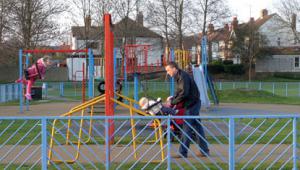
A year on from its introduction we still passionately believe the Homelessness Reduction Act has the potential to transform how we support homeless people in England.
Now for the first time local authorities need to assess people and create a ‘personal housing plan’ for every resident who has become or is on the verge of becoming homeless.
The aim of the personal housing plan is to try and make sure a person has somewhere suitable to live for at least the next six months.
However, the plans are limited to:
• 56 days while a person is threatened with homelessness
• a further 56 days for a homeless person.
The HRA is not perfect, but it is a bold step in the right direction.
However, the number of people reporting to local authorities as homeless is causing cash-strapped councils real challenges as at present the equivalent of the population of the city of Durham is becoming homeless each year.
In 2016-17 there were 59,000, annual homelessness acceptances across England, a rise of almost half (48%) since 2009-10.
This is causing a spike in the number of homeless people local authorities need to house in bed and breakfast accommodation, with statistics last year revealing that councils have spent more than £300m in the past three years placing people in hotels and B&Bs.
At the same time there has been massive cuts to local authority housing related support budgets which has led to the closure of supported housing services.
Not only is this very costly a B&B does not create the right environment to help solve the complex physical and mental health challenges that homeless people face.
As the third largest provider of homelessness services in Britain, our experiences have taught us that local authorities can put in place measures to help save money, prevent personal housing plans becoming a box ticking exercise, and most importantly create better outcomes for those affected by homelessness.
What can councils do?
Infrastructure: The increasing number of homeless people is causing a real stretch on homelessness accommodation available to local authorities and costing councils more money by having to turn to expensive B&Bs.
Local authorities need to look creatively at their property asset portfolio and see if they could convert property into accommodation for homeless people where they can access on-site care and support teams. Leeds, Newcastle, Stevenage and Mansfield were among 10 councils which had adequate facilities to house people andhave not placed a single person in a hotel or B&B in recent years.
Meanwhile Greater Manchester’s A Bed Every Night scheme has seen local authorities and local businesses chip in to provide beds for the homeless inside fire stations and empty buildings with local businesses agreeing to fit kitchens and provide mattresses for free.
Holistic homelessness forums: New commissioning models to tackle homelessness are resulting in more homelessness service providers tackling smaller packages of work. In order to create the best results for local authorities a forum should be established to bring all these service providers together on a regular basis to talk openly and honestly in order to identify issues earlier before they have the potential to turn into significant problems which are more costly for local authorities to solve.
Outsourcing: Outsourced housing provision managed by council ALMOs and other bodies help create a more joined-up approach and better outcomes for homeless people as the organisation doing the assessments will then also be responsible for housing. Creating a new council team dedicated to managing the new Personal Housing Plansis another option instead of piling additional duties on to existing teams.
Floating service: To help provide a more intensive service for homeless people with more complex needs it can pay to invest in floating services of agile care workers which provide the more intensive support that are needed to give them an extra pair of hands to help them when they are at their most vulnerable so they can effectively complete their personal housing plans.
Many homeless people suffer significant trauma during their experience and can temporarily lose the capacity to organise themselves independently.
While many of these solutions involve spending more money up front, investing in additional support can help homeless people to find new homes and volunteering and employment opportunities.
This also enables service providers to create a more stable platform for homeless people to build from rather than see them failing to fulfill their personal home plan, which is more costly for everyone in the long-run.












